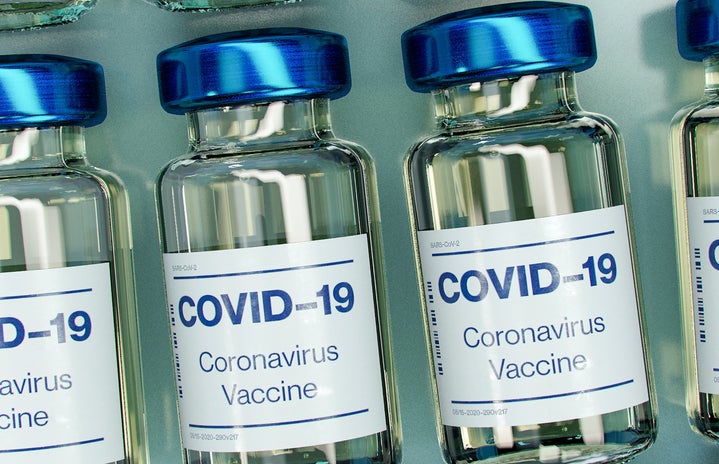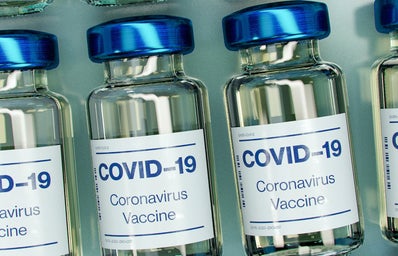If you’re anything like me, you might feel as if you can’t escape the uncertainty and anticipation surrounding the supposedly imminent COVID-19 vaccine. How is it produced? How will it be distributed? What is Operation Warp Speed? Is it safe? And most importantly, when can I get it? In this article, I aim to explore these questions and hopefully provide some clarity. If you don’t subscribe to the Morning Brew, first of all, you should. Secondly, here’s what they’re saying about the logistics:
How is the vaccine produced?
The Morning Brew summarizes a five-step process involved in the making of a vaccine. The first step necessitates the creation of a cell to provoke the immune system– the antigen. The second step is to remove the antigen from the cell that grew it. Next, purify the antigen. Then, (and this step is optional), strengthen the antigen with certain additions to increase its shelf life. Finally, get the solution into millions of vials, and distribute them. So far, 67 vaccine candidates are working on this process.
What is operation Warp Speed?
Operation Warp Speed is the government-sponsored endeavor that is striving to deliver 300 million doses of a COVID-19 vaccine by January of 2021, (yes, that’s about a month from now). If this objective is accomplished, it will have not only condensed what is usually a 73-month process into a span of 14-months but would also go down as one of the most successful government initiatives in recent history. The operation, which has been allotted $18 billion ($12 billion of which has already been expended), encompasses both government agencies and private Pharma companies such as Pfizer and BioNTech.
How will the vaccine be distributed?
Two important factors that contribute to the success of distribution are (1) temperature control and (2) storage. All of the vaccines developed to date require below-freezing temperatures in order to remain viable. Therefore, aircrafts must now develop temperature-controlled holds to allow for the successful transportation of vials. Luckily, it looks like this is possible. Still, a single vaccine dose for each of the world’s 7.8 billion people will require 8,000 cargo planes for distribution. Operation Warp Speed officials nevertheless maintain that, in the 24 hour period following FDA approval, they will be able to deliver a COVID-19 vaccine to every state. As for storage, UPS and Lufthansa are working on “freezer farms” near airports to safely store vaccines. In spite of this, experts estimate a 5-20% spoilage rate, according to the Morning Brew.
So, now that we know what the vaccine entails, let’s take a look at the human component. Here’s what the morning brew says:
Is it safe?
Well, it depends on who you ask. A recent Gallup poll found that 42% of respondents would not get an FDA approved COVID-19 vaccine. Of these respondents, 37% are worried about the rushed timeline, 26% want to wait until they confirm the vaccine’s safety, and 12% simply do not trust vaccines. Dr. Anthony Fauci, however, has declared that the vaccine process “did not compromise at all safety nor did it compromise scientific integrity.” Personally, I trust Dr. Fauci wholeheartedly.
When can I get the vaccine?
The Duke Global Health Institute estimates that the COVID-19 vaccine will reach the entire population by 2024. The CDC decides who gets it first, and they have identified healthcare workers, the elderly (persons ages 65+), people with underlying conditions, and essential workers as top-priority. But these four groups combined represent roughly 220 million people, and experts suggest that only 10 to 15 million doses of the vaccine will be available at the outset. Therefore, the National Academies of Sciences, Engineering, and Medicine committee has proposed a four-phase plan for allocation of the vaccine. Here is the breakdown of the individuals who will receive the vaccine in each phase:
Phase 1:
Frontline doctors, nurses, first responders, nursing home workers, and members of the population who possess two or more risk factors (characteristics that make one more likely to contract a disease).
Phase 2:
Essential workers: teachers, school staff members, childcare workers, and people working in the food supply chain.
Phase 3:
Children and adults ages 30 and younger.
Phase 4:
The remainder of the population.
The first two phases account for roughly 50% of the U.S. population. As for timing, CNN reports that phase 1 may begin as early as this month, but is very likely to occur by January. Phase 2 could begin by April, and phase 3 by May. The timing all depends, however, on production, distribution, and FDA approval. So, if you fall into phase 3 or 4 as I do, you’re looking at May as the absolute earliest. But again, it depends on who you ask. It could very well be years.



